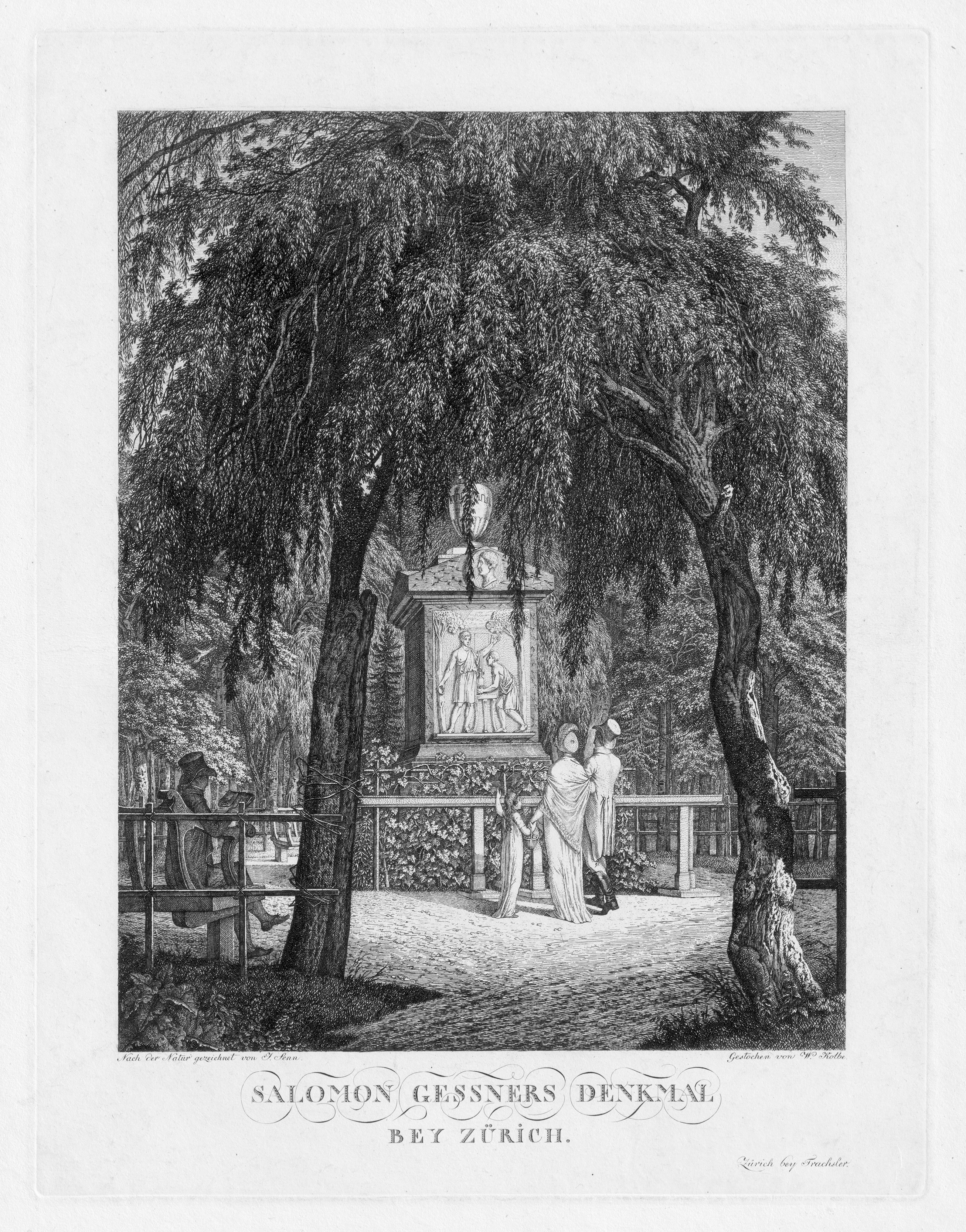Loading the page ...
Carl Wilhelm Kolbe the Elder
(1759 Berlin – 1835 Dresden)
Monument to Salomon Gessner near Zurich. Etching after Johannes Senn on ivory-coloured wove paper. 40.5 x 31.1 cm. Circa 1800. Martens 307 II.
This atmospheric and sensitively observed scene reflects the deep respect that Carl Wilhelm Kolbe felt for the popular and influential Swiss writer, painter and printmaker Salomon Gessner. “If one were not aware of it from his poems, one would see from his etchings that this man felt nature in every plant, in every blade of grass ...” Such was Kolbe’s opinion of Gessner (quoted in U. Martens, Der Zeichner und Radierer Carl Wilhelm Kolbe d. Ä., Berlin 1976, p. 16).
Kolbe had a deep intellectual affinity with Gessner – his senior by a generation – who profoundly influenced his artistic oeuvre. As a self-taught painter and printmaker, Gessner developed in the course of his artistic career a highly idiosyncratic approach to landscape, which combined a deep attachment to nature with idyllic transfiguration. As an artist he achieved great popularity with lavishly conceived Arcadian landscapes populated by mythological figures, fabulous creatures and shepherds. Impressive trees with luxuriant foliage, waterfalls, picturesque crags and grottoes were his preferred compositional elements. Kolbe’s own artistic career is inconceivable without Gessner’s powerful example. Like the latter, Kolbe, who was also active as a philologist, only took up art as an adult. In 1790, on the recommendation of Daniel Chodowiecki, he began a course of study at the Berlin Academy. Kolbe proved a talented pupil and was admitted to membership of the Academy in 1795. That same year the budding artist moved to Dessau, which was to be his final working place. In 1798 Prince Leopold Friedrich Franz von Anhalt (1740–1817) appointed him court engraver and teacher of drawing and French at the secondary school in Dessau.
The present print probably dates from shortly after 1800. The contemplative character of the portrayal is appropriate to the commemorative theme. Two weeping willows with their wonderfully filigreed foliage frame the simple, classical-style monument. A well-dressed couple out for a Sunday stroll pause reverently in front of the monument devoted to the poet and artist, while their little daughter gestures inquiringly towards it. In the left foreground, in the cool shade of one of the willows, a gentleman is seated on a bench absorbed in a book. The whole scene is imbued with silent introspection and bourgeois contentment. Kolbe’s etching is a charming product of its time that bears subtle and personal witness to the veneration he felt for his Swiss mentor. A very fine, sharp impression with wide margins. Minor ageing, otherwise in very good condition.
Contact us for further information